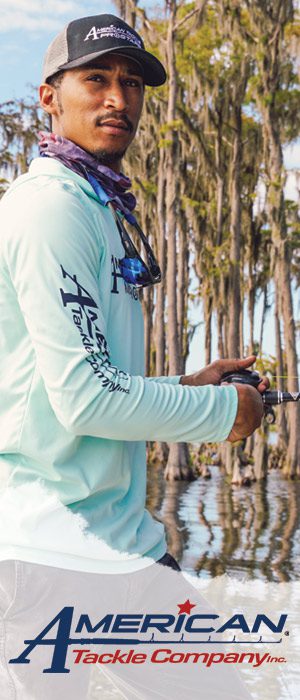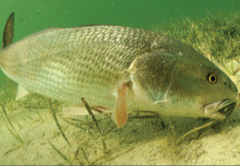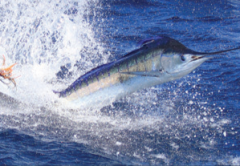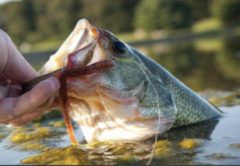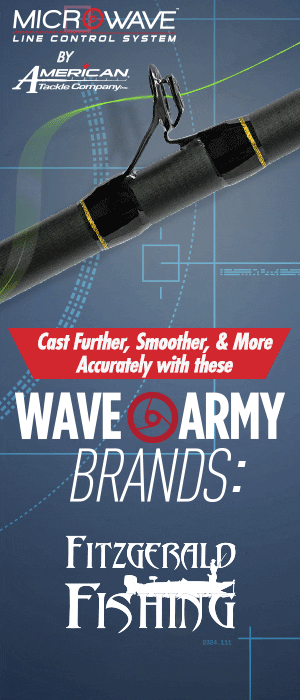By: Phil Wolf, Coastal Angler Magazine Orlando
With over 50 years of angling experience here in Central Florida, I have seen some of the biggest bass caught during the hottest months. July and August not only bring afternoon rains to cool the water temperature, but those storms and high air temps tend to group schools of large bass. Learning to bass fish while walking banks of local ponds, residential canals, retention lakes, and around our local golf course we could always get a few bites during the low light of early morning or just before sunset. Something I soon discovered was how the bass bite changed during the dogdays of summer and my tactics for catching them had to change as well. As the calendar moves into the hottest days of summer the bass locations and their feeding habits change. Because bass are a cold-blooded animal, when the water temperature rises over 85 degrees the bass’ metabolism slows down, as such their willingness to chase a bait or be very aggressive is extremely diminished when temps get well into the 90s. As the bass’s feeding habits change, so do the areas and habitat where they live.
Habitat: Think of habitat as the bass’s home, living room, bedroom, etc. When water temp gets into high eighties or even the low nineties, the bass will move from the shallow water flats or heavy cover vegetation areas to deeper water with any available structure. The deeper the water, the cooler the temperature. Most of our Central Florida lakes are shallow bowl type lakes, meaning they are generally not too deep; most of them won’t exceed 15 feet. The other lake types are natural spring feed lakes. These lakes will tend to have much deeper depths with deep holes, ledges, humps, grass-lines, and other bottom features that will hold large schools of bass. Bass need offshore structure like stumps, brush piles – both natural and man-made; ledges, shell-bars, deep grass beds, eel grass and hydrilla just to name a few. Getting to know the bottom composition of the lakes you fish will greatly improve your bite rate and overall success. With today’s electronics like 360-degree imaging, forward facing Live Target, side-scan and down-scan imaging, it has never been easier to learn your favorite lake bottom. Today’s professional bass anglers who make their living catching the heaviest 5 bass stringers often spend several hours a day doing nothing but idling around in their boats just watching and entering waypoints for unique bottom contour changes, ledges, holes, under-water points, humps etc., as they find large schools or groups of bass. These areas known as sweet spots will all hold fish when the outside temperature rises. Finding these types of structure on the lake you fish will bring success. Deep edges of Kissimmee grass, offshore hydrilla, deep eel grass beds, shell bars or brush piles are the best structure found in the shallow bowl type lakes. It is pretty easy finding these with the electronics mentioned earlier and pay attention to other boats fishing deeper or open water in the middle of the lake. When in an area seeing a bent rod and someone catching fish, give them some space and simply mark waypoint and return when the boat leaves to check what lurks under the surface.
Techniques and Tackle: The types of fishing rods, reels, and tackle vary with owner use or preference. Some like to use spinning tackle, some like conventional bait casing reels and of course some use both depending on presentation of the bait to be used. Summertime baits that produce the best bites also varies based on time of day, water depth, weather conditions, wind, etc. Early morning before the sun gets up and over-head or late afternoon to early evenings with lower light conditions tend to produce some of the best bite situations. One of my favorite ways to catch bass is at first light with top water plugs. Being on the lake already when the sun peeks over the horizon can produce super exciting bites on surface type baits. Todays’ plastic frogs, swim baits worked right on the surface making a visible wake, chugger type baits and spook hard baits can provide some rod jarring visible bites that are difficult to explain the rush it provides. Other good places to start your day are at the mouths of creeks or rivers where they meet the edges of the lake especially those where wind, current or running water is present. This time of year, the bass will be schooling and feeding on the new shad hatch and if you find schools of bait you can bet the schools of bass won’t be very far away. Lipless baits, shallow running crank baits, and small surface plugs can provide some crazy and exciting action. Once the school starts feeding it is very common to get a bite or catch a fish on every cast. It is very important to match your bait size to the bait the bass are feeding. When the sun starts to get over head and the morning bite slows down move deeper to the types of cover or structure mentioned earlier. These deeper waterhaunts where the bass will move to will usually be very close to the areas where they were schooling and feeding earlier in the day. Slowing down your presentations will usually be the key to later in the day success. Use baits like Carolina rigs with either a 8” to 12” worm or lizard with a weight large enough to keep the weight in contact with the bottom. Large deep running crank baits, large swim baits and jigging spoons for very deep water will produce the best bite success. Schools of bass will often get all fired up when several fish are caught because they compete to get to the bait. This is common when fishing large billed, deep running crank baits. You can get a bite on every cast once a school starts a feeding frenzy.
July’s dogdays of summer are here – you can tell from the temperatures outside already into the mid 90’s. Get out there early and catch the giant bass of summer! Watch out for the fast-approaching afternoon rainstorms and stay safe. Take a kid fishing with you over the summer and give them a memory that will last a lifetime.


